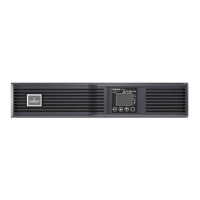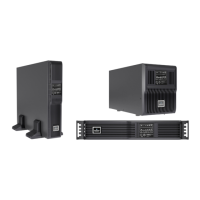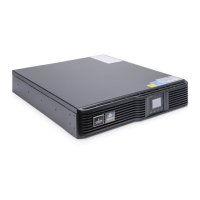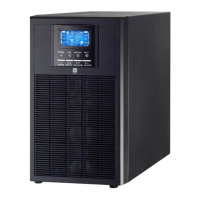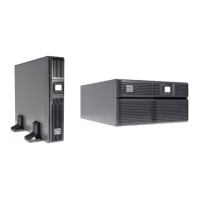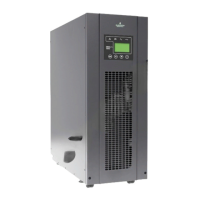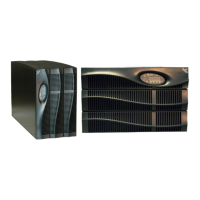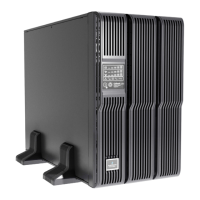What to do if my Emerson Liebert GXT UPS is overloaded?
- AAllen TranSep 12, 2025
If your Emerson UPS is overloaded, the first step is to remove some of the connected devices to reduce the load. This should resolve the issue.
What to do if my Emerson Liebert GXT UPS is overloaded?
If your Emerson UPS is overloaded, the first step is to remove some of the connected devices to reduce the load. This should resolve the issue.
What to do if short circuit occurs on Emerson Liebert GXT UPS output?
If a short circuit occurs on the output of your Emerson UPS, remove the short-circuited output/situation. If the problem continues, contact the dealer for repair.
What to do if DC bus voltage is too high in Emerson Liebert GXT?
If the mains input or load transient current causes the DC bus voltage to be too high in your Emerson UPS, shut down and restart the UPS to see if the issue persists. If it does, contact the dealer for repair.
Why is UPS output power negative in Emerson UPS?
If the UPS output power is negative on your Emerson UPS, this may be due to a regenerative load or current control failure in the parallel system. Contact the dealer for assistance.
Instructions for safely moving and storing the UPS unit.
Precautions before installing the UPS, including acclimation and environmental checks.
Guidelines for installing the UPS, including load limits, ventilation, and earthing.
Safety considerations during UPS operation, including earth connection and power disconnection.
Lists safety and EMC standards the UPS complies with, such as IEC/EN 62040.
Steps for unpacking the UPS and checking package contents for damage.
Identifies various ports and components on the rear panel of the UPS.
Illustrates rear panels and input/output terminals for tower and rack models.
Detailed steps and wiring specifications for installing a single UPS unit.
Instructions for installing multiple UPS units in a parallel system.
Instructions for installing monitoring software for UPS management and shutdown.
Explains the function of each button on the UPS front panel.
Describes the front panel LED indicators and the LCD panel layout.
Details the various display screens and information shown on the UPS LCD panel.
Lists the different audible alarms, their causes, and whether they can be muted.
Step-by-step guide on how to turn on and operate a single UPS unit.
Explains how the UPS operates when using battery power, including alarms and backup time.
Instructions on how to perform a battery self-test and its periodic nature.
Procedure for safely turning off the UPS when connected to utility power.
Procedure for safely turning off the UPS when running on battery power.
How to mute the UPS audible alarms.
How to interpret and address warning indicators and codes.
How to interpret and address critical fault conditions and errors.
Procedure for qualified technicians to change battery configuration.
Instructions for connecting and operating multiple UPS units in parallel.
Steps for connecting UPS units in a parallel system and verifying connections.
Procedure for adding a new UPS unit to an existing parallel system.
Procedure for safely removing a UPS unit from a parallel system.
Explains common abbreviations displayed on the UPS LCD screen.
Shows the UPS LCD interface for single and parallel models, detailing parameters.
Details the UPS parameter settings via the LCD interface.
Setting to enable or disable the frequency converter function.
Setting for output frequency, including auto and fixed modes.
Setting to enable or disable the ECO (Energy Saving) mode.
Configuration to allow or forbid the UPS from operating in bypass mode.
Setting to enable or disable manual operation of bypass mode.
Setting the maximum backup time and battery discharge protection.
Setting to enable or disable the hot standby function.
Configuration for programmable output, including ON, OFF, and ATO modes.
Setting the shutdown voltage for programmable output.
Setting the shutdown time for programmable output.
Describes the UPS operation in AC mode and its LCD display.
Describes the UPS operation in ECO mode and its LCD display.
Describes the UPS operation in CVCF mode and its LCD display.
Describes the UPS operation in Battery mode and its LCD display.
Describes the UPS operation during battery test and its LCD display.
Describes the UPS operation in bypass mode and its LCD display.
Describes how fault status is displayed on the UPS LCD panel.
Lists fault codes, their icons, events, and possible causes.
Lists warning codes, icons, descriptions, and alarm sounds.
Troubleshooting table for warning conditions, including cause and remedy.
Troubleshooting table for fault conditions, including cause and remedy.
Guidelines for storing the UPS, including charging frequency and duration.
Safety precautions and general guidelines for maintaining the UPS system.

